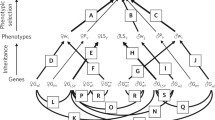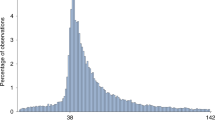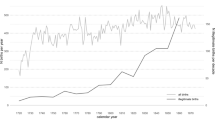Abstract
The fitness benefits of multiple mating determine the strength of sexual selection in each sex. This is traditionally quantified by the number of offspring born to once versus multiply mated individuals. In species with (bi)parental care, however, this measure may overestimate the benefits of multiple mating since having several mates can increase offspring number but decrease offspring quality. We analyzed short- and long-term fitness consequences of multiple marriages for both sexes in humans in preindustrial Finnish populations, where monogamy was socially enforced and remarriage was possible only after widowhood. Remarriage increased the lifetime number of offspring sired by men by lengthening their reproductive span but was unrelated to the lifetime number of births for women. However, neither men's nor women's long-term fitness, measured as their number of grandchildren, was significantly increased or decreased by remarriage. These associations were not modified by individual wealth. Our results suggest that despite increasing the number of offspring sired by men, the long-term fitness benefits of serial monogamy may be negligible for both sexes when parental investment is crucial for offspring success and continues to adulthood. They also demonstrate the importance of incorporating long-term fitness measures when quantifying the benefits of mating and reproductive strategies.


Similar content being viewed by others
References
Allison PD (1982) Discrete-time methods for the analysis of event histories. Sociol Methodol 13:61–98
Allison PD (1999) Logistic regression using the SAS® System: theory and application. SAS Institute Inc., Cary, NC
Amato PR, Keith B (1991a) Parental divorce and the well-being of children: a meta-analysis. Psychol Bull 110:26–46
Amato PR, Keith B (1991b) Parental divorce and adult well-being: a meta-analysis. J Marriage Fam 53:43–58
Anderson KG (2006) How well does paternity confidence match actual paternity? Evidence from worldwide nonpaternity rates. Curr Anthropol 47:513–520
Andersson T, Hogberg U, Akerman S (1996) Survival of orphans in 19th century Sweden—the importance of remarriages. Acta Paediatr 85:981–985
Arnold SJ (1994) Bateman's principles and the measurement of sexual selection in plants and animals. Am Nat 144:S126–S149
Arnold SJ, Duvall D (1994) Animal mating systems: a synthesis based on selection theory. Am Nat 143:317–348
Arnold SJ, Wade MJ (1984) On the measurement of natural and sexual selection: applications. Evolution 38:720–734
Bateman AJ (1948) Intra-sexual selection in Drosophilia. Heredity 2:349–368
Borgerhoff Mulder M (1987) On cultural and reproductive success: Kipsigis evidence. Am Anthropol 89:618–634
Borgerhoff Mulder M (2009) Serial monogamy as polyandry or polygyny? Marriage in the Tanzanian Pimbwe. Hum Nat 20:130–150
Brown SL (2006) Family structure transitions and adolescent well-being. Demography 43:447–461
Brown GR, Laland KN, Borgerhoff Mulder M (2009) Bateman's principles and human sex roles. Trends Ecol Evol 24:297–304
Clutton-Brock TH (2007) Sexual selection in males and females. Science 318:1882–1885
Courtiol A, Pettay JE, Jokela M, Rotkirch A, Lummaa V (2012) Natural and sexual selection in a monogamous historical human population. Proc Natl Acad Sci U S A 109:8044–8049
Darwin C (1899) The descent of man, and selection in relation to sex, 2nd edn. John Murray, London
Emlen ST, Oring LW (1977) Ecology, sexual selection, and the evolution of mating systems. Science 197:215–223
Flinn MV, Quinlan RJ, Coe K, Ward CV (2007) Evolution of the human family: cooperative males, long social childhoods, smart mothers, and extended kin networks. In: Salmon CA, Shackleford TK (eds) Family Relationships: An Evolutionary Perspective. Oxford University Press, Oxford, pp 16–38
Forsberg AJL, Tullberg B (1995) The relationship between cumulative number of cohabitating partners and number of children for men and women in modern Sweden. Ethol Sociobiol 16:221–232
Gille H (1949) The demographic history of the Northern European countries in the eighteenth century. Pop Stud 3:3–65
Gillespie DOS, Russell AF, Lummaa V (2008) When fecundity does not equal fitness: Evidence of a quantity-quality trade-off in pre-industrial humans. Proc R Soc Lond B 275:713–722
Gyimah OS (2009) Polygynous marital structure and child survivorship in Sub-Saharan Africa: some empirical evidence from Ghana. Soc Sci Med 68:334–342
Hayward AD, Holopainen J, Pettay JE, Lummaa V (2012) Food and fitness: associations between crop yields and life-history traits in a longitudinally-monitored pre-industrial human population. Proc R Soc Lond B 279:4165–4173
Heervä J, Joutsamo T (1983) Kustavin historia. Uudenkaupungin Kirjapaino Oy, Uusikaupunki, Finland
Huxley J (1938) Darwin's theory of sexual selection and the data subsumed by it, in the light of recent research. Am Nat 72:416–433
Jokela M, Rotkirch A, Rickard IJ, Pettay J, Lummaa V (2010) Serial monogamy and reproductive success in a contemporary human population. Behav Ecol 21:906–912
Käär P, Jokela J, Merilä J, Helle T, Kojola I (1998) Sexual conflict and remarriage in preindustrial human populations: causes and fitness consequences. Evol Hum Behav 19:139–151
Kaplan H, Lancaster JB (2003) An evolutionary and ecological analysis of human fertility, mating patterns and parental investment. In: Wachter KW, Bulatao RA (eds) Offspring: Fertility Behavior in Biodemographic Perspective. National Research Council, National Academies Press, Washington D.C., pp 170–223
Karskela S (2001) Sukututkijan tietokirja. Jyväskylä, Finland
Kirkpatrick M, Ryan MJ (1991) The evolution of mating preferences and the paradox of the lek. Nature 350:33–38
Lahdenperä M, Lummaa V, Helle S, Tremblay M, Russell AF (2004) Fitness benefits of prolonged post-reproductive lifespan in women. Nature 428:178–181
Lahdenperä M, Russell AF, Lummaa V (2007) Selection for long lifespan in men: benefits of grandfathering? Proc R Soc Lond B 274:2437–2444
Lahdenperä M, Russell AF, Tremblay M, Lummaa V (2010) Selection on menopause in two pre-modern human populations: no evidence for the Mother hypothesis. Evolution 65:476–489
Lahdenperä M, Lummaa V, Russell AF (2011) Selection on male longevity in a monogamous human population: late-life survival brings no additional grandchildren. J Evol Biol 24:1053–1063
Liu J, Lummaa V (2011) Age at first reproduction and probability of reproductive failure in women. Evol Hum Behav 32:433–443
Liu J, Rotkirch A, Lummaa V (2012) Maternal risk of breeding failure remained low throughout the demographic transitions in fertility and age at first reproduction in Finland. PLoS ONE 7:e34898
Low BS (2000) Why sex matters. Princeton University Press, Princeton, NJ
Lummaa V, Haukioja E, Lemmetyinen R, Pikkola M (1998) Natural selection on human twinning. Nature 394:533–534
Lummaa V, Pettay JE, Russell AF (2007) Male twins reduce fitness of female co-twins in humans. Proc Natl Acad Sci U S A 104:10915–10920
Luther G (1993) Suomen Tilastotoimen Historia vuoteen 1970. WSOY, Helsinki, Finland
Marlowe F (2000) Paternal investment and the human mating system. Behav Process 51:45–61
Mealey L (2000) Sex differences: development and evolutionary strategies. Academic, London
Moorad JA (2013) Multi-level sexual selection: individual and family-level selection for mating success in a historical human population. Evolution 67:1635–1648
Moorad JA, Promislow DEL, Smith KR, Wade MJ (2011) Mating system change reduces the strength of sexual selection in an American frontier population of the 19th century. Evol Hum Behav 32:147–155
Moring B (1993) Household and family in Finnish coastal societies 1635–1895. J Fam Hist 467:395–414
Moring B (2002) Widowhood options and strategies in preindustrial northern Europe—socioeconomic differences in household position of the widowed in 18th and 19th century Finland. Hist Fam 7:79–99
Moring B (2003) Nordic family patterns and the north–west European household system. Contin Chang 18:77–109
Nettle D (2008) Why do some dads get more involved than others? Evidence from a large British cohort. Evol Hum Behav 29:416–423
Nitsch A, Faurie C, Lummaa V (2013) Are elder siblings helpers or competitors? Antagonistic fitness effects of sibling interactions in humans. Proc R Soc Lond B 280(1750):20122313
Pettay JE, Helle S, Jokela J, Lummaa V (2007) Wealth class-specific natural selection on female life-history traits in historical human populations. PLoS ONE 2:e606
Quinlan RJ, Quinlan MB (2007) Evolutionary ecology of human pair-bonds: cross-cultural tests of alternative hypotheses. Cross-Cult Res 41:149–169
R Development Core Team. 2011. R: A language and environment for statistical computing. R Foundation for Statistical Computing, Vienna, Austria. http://www.r-project.org/
Rickard IJ, Holopainen J, Helama S, Helle S, Russell AF, Lummaa V (2010) Food availability at birth limited reproductive success in historical humans. Ecology 91:3515–3525
Ruxton GD, Beauchamp G (2008) Time for some a priori thinking about post hoc testing. Behav Ecol 19:690–693
Saarimäki P (2010) The Norms, Practices and conflicts of sex and marriage—premarital and marital sexual Activity in Rural central Finland in the Late Nineteenth Century. Dissertation, Jyväskylä University, Jyväskylä
Salzano FM, Neel JV, Maybury-Lewis DI (1967) Demographic data on two additional villages: genetic structure of the tribe. Am J Hum Genet 19:463–489
Schuster SM, Wade MJ (2003) Mating systems and strategies. Princeton University Press, Princeton
Sear R, Mace R (2008) Who keeps children alive? A review of the effects of kin on child survival. Evol Hum Behav 29:1–18
Soininen AM (1974) Old traditional agriculture in Finland in the 18th and 19th centuries. Forssan Kirjapaino Oy, Forssa, Finland
Strassmann BI (2011) Cooperation and competition in a cliff-dwelling people. Proc Natl Acad Sci U S A 108:10894–10901
Sundin J (1992) Sinful sex: legal prosecution of extramarital sex in preindustrial Sweden. Soc Sci Hist 16:99–128
Trivers R (1972) Parental investment and sexual selection. In: Campbell B (ed) Sexual selection and the descent of man 1871–197. Aldine, Chicago, pp 136–179
Willführ KP (2009) Short- and long-term consequences of early parental loss in the historical population of the Krummhörn (18th and 19th century). Am J Hum Biol 21:488–500
Acknowledgments
We thank K. Pokkinen, A. Siitonen, L. Iso-Iivari, and V. P. Toropainen for data collection and two anonymous reviewers for helpful comments. This work was funded by the European Research Council, the Kone foundation (Helsinki, Finland), the Wissenschaftskolleg (Berlin, Germany), the Royal Society (UK), and the University of Helsinki Research Funds.
Author information
Authors and Affiliations
Corresponding author
Additional information
Communicated by P. M. Kappeler
Electronic supplementary material
Below is the link to the electronic supplementary material.
ESM 1
(DOCX 32.4 kb)
Rights and permissions
About this article
Cite this article
Pettay, J.E., Rotkirch, A., Courtiol, A. et al. Effects of remarriage after widowhood on long-term fitness in a monogamous historical human population. Behav Ecol Sociobiol 68, 135–143 (2014). https://doi.org/10.1007/s00265-013-1630-6
Received:
Revised:
Accepted:
Published:
Issue Date:
DOI: https://doi.org/10.1007/s00265-013-1630-6




